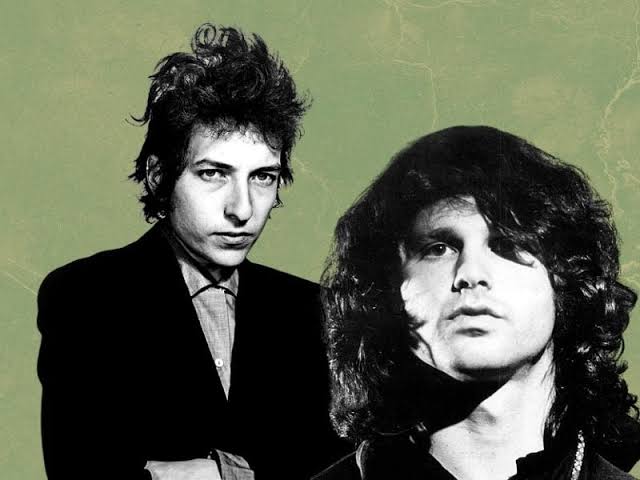
Jim Morrison, the legendary frontman of The Doors, has always been shrouded in a veil of mystery. Known for his poetic lyrics, rebellious spirit, and tragic early death at just 27, Morrison left behind a legacy that continues to fascinate fans and music historians alike. Now, Netflix has peeled back the layers of myth with its new documentary, “When the Music’s Over: The Secret Life of Jim Morrison,” revealing previously undisclosed truths that challenge everything we thought we knew.
From the very beginning, the documentary plunges viewers into Morrison’s complex psyche. Far from the caricature of a drunken rock star, Netflix paints a portrait of a deeply philosophical, troubled artist whose intellect rivaled his musical genius. Through never-before-seen journal entries and unearthed audio recordings, the documentary reveals Morrison’s obsession with death, Native American spirituality, and existential freedom—elements that heavily influenced his music and personal choices.
One of the biggest revelations is Morrison’s secret desire to leave fame behind. According to letters shared by a close confidant, Morrison had plans to fake his own death and disappear from the public eye. These letters, discovered in a Parisian archive, were allegedly written just days before his sudden death in 1971. The documentary carefully examines these findings, interviewing experts and friends who now question whether Morrison’s death from heart failure was truly what it seemed.
Another explosive secret uncovered by the documentary involves Morrison’s tumultuous relationship with the U.S. government. Declassified FBI files suggest he was being monitored due to his radical anti-establishment lyrics and influence on the youth. Morrison’s 1969 Miami arrest for indecent exposure, long viewed as a controversial moment in his career, is now positioned in the documentary as a politically motivated takedown by authorities threatened by his cultural power.
The film also delves into Morrison’s childhood trauma—something he rarely spoke about publicly. Interviews with estranged family members and childhood friends reveal a young Jim haunted by a controlling military father and an emotionally distant upbringing. These intimate revelations help piece together the emotional volatility and longing that surfaced in his poetry and lyrics.
Perhaps the most touching part of the documentary is its exploration of Morrison’s hidden love affair with a French photojournalist named Claire Debray. Their relationship was reportedly kept secret to protect Debray’s safety from obsessed fans and paparazzi. Through private photos, letters, and interviews, viewers see a softer, more vulnerable Morrison—far from the chaotic image the public often remembers.
Netflix also examines Morrison’s intellectual side in great detail. A segment dedicated to his time at UCLA film school showcases short films and writings that demonstrate his fascination with surrealism and visual storytelling. His passion for cinema and literature, especially the works of Rimbaud and Nietzsche, offer a richer understanding of the man behind The Doors.
In a surprising twist, the documentary presents the theory that Morrison might have been exploring bisexuality, a topic rarely discussed in his lifetime. Friends interviewed in the film suggest that Morrison’s fluidity was part of his broader search for identity and freedom. This revelation opens up a fresh discussion on Morrison’s role as a counterculture icon who defied societal norms at every turn.
Another key aspect of the documentary is its candid discussion of Morrison’s struggles with addiction. Far from glorifying his drug use, the film features raw testimonies from bandmates and studio engineers who watched him spiral into self-destruction. They also share how his haunting vocals were often recorded in just one take—often while under the influence—which adds a layer of tragedy to his artistic brilliance.
Music fans will be thrilled by the rare behind-the-scenes footage of The Doors’ recording sessions. Netflix has secured access to private studio reels, unreleased demos, and outtakes that show Morrison’s creative process in action. These clips offer a unique look at how some of the band’s most iconic songs—like “The End” and “Riders on the Storm”—were born from improvisation and emotional intensity.
The final episode of the documentary doesn’t just end with Morrison’s death. Instead, it follows the conspiracy theories that claim he faked his death and is living in hiding. From alleged sightings in the Caribbean to interviews with Morrison lookalikes, the series plays with these myths without claiming to solve them—leaving viewers to draw their own conclusions.
In the end, “When the Music’s Over” isn’t just a documentary—it’s a rebirth of Jim Morrison’s legend. Netflix has given fans a chance to meet the man behind the mystery, with all his contradictions, brilliance, and fragility. It’s a haunting, beautiful, and often shocking portrayal that redefines one of rock’s most enigmatic figures. Whether you’re a die-hard Doors fan or new to the legend of Jim Morrison, this documentary is a must-watch that lingers long after the final credits roll.
Leave a Reply